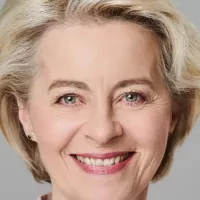Novae are astronomical events where a bright, seemingly "new" star appears and gradually fades over time. These events involve white dwarfs in binary star systems. There are various types of novae, including classical novae, recurrent novae (RNe), and dwarf novae, all categorized as cataclysmic variable stars. The sudden brightness is attributed to the white dwarf drawing matter, primarily hydrogen, from its companion star. This accumulated material eventually triggers a thermonuclear explosion on the white dwarf's surface, resulting in the nova's visible outburst.
1933: RS Ophiuchi Eruption
The recurrent nova, RS Ophiuchi, erupted in 1933.
1938: T Coronae Borealis Brightening Event
A brightening event, similar to the one observed in 2015, was reported for T Coronae Borealis in 1938.
1945: T Coronae Borealis Dimming Event
A dimming event, similar to the one observed in 2023, occurred with T Coronae Borealis in 1945.
1946: T Coronae Borealis Outburst
T Coronae Borealis had an outburst in 1946.
1958: RS Ophiuchi Eruption
RS Ophiuchi erupted again in 1958.
1967: RS Ophiuchi Eruption
The recurrent nova RS Ophiuchi erupted in 1967.
August 1975: Bright Nova Cygni 1975
In August 1975, Nova Cygni 1975 appeared in the constellation Cygnus and reached a magnitude of 2.0, making it easily visible to the naked eye.
1985: RS Ophiuchi Eruption
RS Ophiuchi erupted again in 1985.
1989: Theory of Helium Novae Proposed
The theory of helium novae, which lack hydrogen lines in their spectrum, was first proposed in 1989.
2000: First Candidate Helium Nova Observed
In 2000, V445 Puppis was observed, becoming the first candidate helium nova.
2006: RS Ophiuchi Eruption
The recurrent nova, RS Ophiuchi, erupted in 2006.
February 2007: Nova V1280 Scorpii
V1280 Scorpii reached a magnitude of 3.7 in February 2007.
2008: Extragalactic Nova M31N 2008-12a
The extragalactic nova M31N 2008-12a was observed to erupt as frequently as once every 12 months.
December 2013: Bright Nova V1369 Centauri
In December 2013, a bright nova, V1369 Centauri, reached a magnitude of 3.3.
December 2013: Nova Centauri 2013 Discovery
Nova Centauri 2013 was discovered in December 2013, becoming the brightest nova of the millennium, reaching a magnitude of 3.3.
February 2015: T Coronae Borealis Begins Brightening
In February 2015, T Coronae Borealis began brightening from a magnitude of 10.5 to about 9.2.
April 2016: T Coronae Borealis Brightening Reported
On April 2016, the Sky & Telescope website reported that T Coronae Borealis had brightened from magnitude 10.5 to about 9.2, beginning in February 2015.
June 2018: T Coronae Borealis Remains Active
By June 2018, the star T Coronae Borealis had dimmed slightly but remained unusually active after its brightening event in 2015.
2019: Recorded Novae in the Milky Way
As of 2019, 407 probable novae had been recorded in the Milky Way.
2021: RS Ophiuchi Eruption
The recurrent nova RS Ophiuchi erupted once again in 2021.
April 2023: T Coronae Borealis Dims
In April 2023, T Coronae Borealis dimmed to magnitude 12.3.
September 2024: Predicted Eruption of T Coronae Borealis
T Coronae Borealis is expected to erupt between March and September 2024.
2083: Predicted Eruption of V Sagittae
The next eruption of V Sagittae is predicted to occur in approximately 2083, give or take about 11 years.
Mentioned in this timeline
NASA the National Aeronautics and Space Administration is an independent...

A telescope is an instrument used to observe distant objects...

A star is a self-gravitating luminous plasma spheroid The Sun...

September is the ninth month of the year in the...
Trending

1 month ago Maxxine Dupri, assisted by AJ Lee, dethrones Becky Lynch for Intercontinental Title on Raw!

7 months ago Kiefer Sutherland and Rebel Wilson star in 'Tinsel Town'; First Look Released!
26 days ago Republic Services Donates Turkeys Across Tennessee for Holidays, Helping Families in Need

Chick-fil-A is a prominent American fast food chain known for its chicken sandwiches With headquarters in College Park Georgia they...

Coldplay is a British rock band formed in London in comprising Chris Martin Jonny Buckland Guy Berryman and Will Champion...

29 days ago Severe Thunderstorms Hit North Texas: Lightning, Hail, Damaging Winds, and Power Outages
Popular

Tucker Carlson is an American conservative political commentator known for...

XXXTentacion born Jahseh Dwayne Ricardo Onfroy was a controversial yet...

Ben Shapiro is a prominent American conservative political commentator media...

Candace Owens is an American conservative political commentator and author...

William Franklin Graham III commonly known as Franklin Graham is...

Ursula Gertrud von der Leyen is a prominent German politician...
